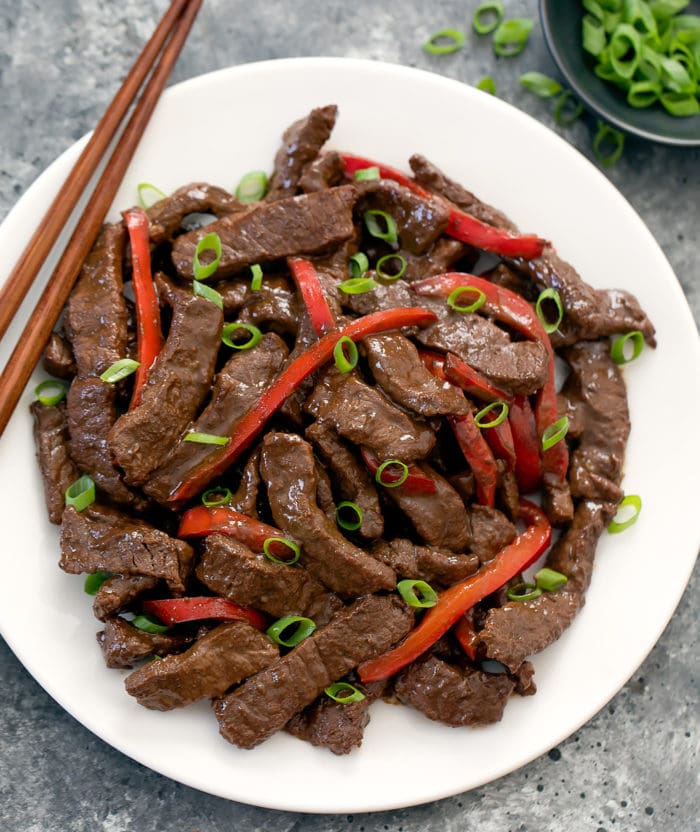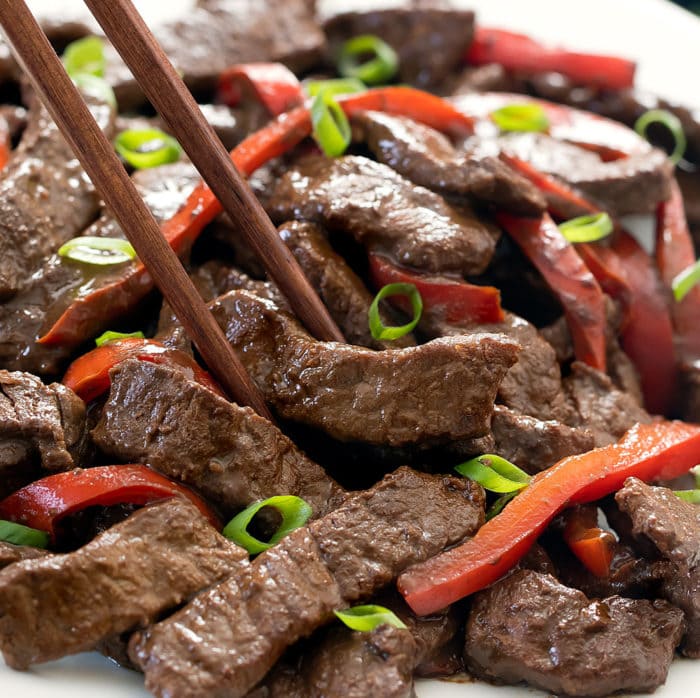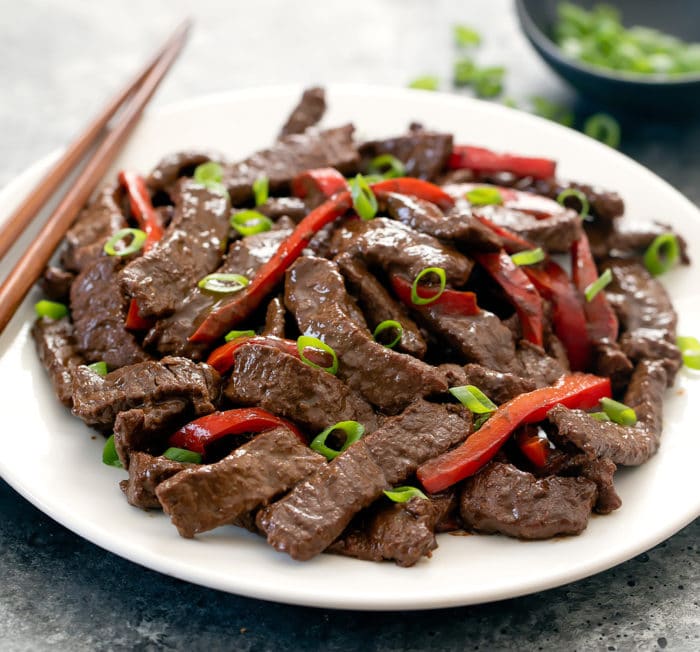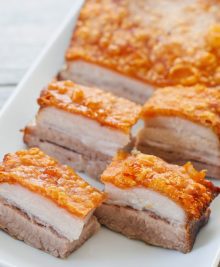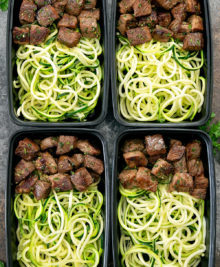An easy homemade Szechuan Beef recipe that tastes as good as the restaurant version. Tender slices of beef are cooked in a flavorful savory spicy sauce.
What is Szechuan Beef?
Szechuan beef is a dish that comes from Sichuan cuisine. However, it has become so popular in the US that there is also an Americanized version of the dish available at many Chinese American restaurants.
There are many Chinese regional cuisines but the one that has become the most popular in the US in the last few years is Sichuan cuisine (also spelled Szechuan cuisine). Originating from Sichuan province, this style of cuisine is known for using a lot of peppers in their cooking, creating rich and spicy dishes.
They are especially known for Sichuan peppers, a unique aromatic pepper that creates a numbing tingly sensation around the mouth when ingested. I used this powder in my Mapo Tofu, another popular Sichuan dish.
Szechuan beef is made of tender slices of beef that are then cooked in a savory, spicy sauce. The American version is usually less spicy and a little sweeter, whereas the original version is mostly savory and spicy.
The recipe I’m sharing with you today is closer to the Americanized version because the ingredients are more easily accessible, but I do include a few elements of the original Sichuan version too. If you prefer something not spicy, I recommend checking out my Chinese Pepper Steak or Mongolian Beef recipe instead.
How to Keep the Beef Tender
- To keep the beef tender, you want to stay away from tough cuts of meat. I usually choose flank steak.
- The beef needs to be sliced against the grain.
- The beef is then marinated in soy sauce, rice cooking wine, and cornstarch. The soy sauce and wine help break down the beef to tenderize it. The cornstarch creates a protective coating over the beef when it cooks, which is key to keeping the beef tender.
More Recipes
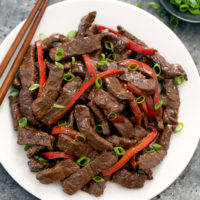
Szechuan Beef
Ingredients
- 1 tbsp cooking oil can use canola, vegetable, or olive oil
- 1 lb flank steak cut into 1/4 inch thick strips
- 2 cloves garlic minced
- 1 red bell pepper cut into thin strips
- 2 scallions thinly sliced
Marinade
- 2 tsp cornstarch
- 2 tsp shaoxing rice wine
- 1 tbsp dark soy sauce
Sauce
- 1/2 tbsp oyster sauce
- 2 tsp chili garlic sauce like Sambal
- 2 tbsp dark soy sauce
- 1/2 tbsp brown sugar or similar sweetener
- 3-4 tbsp water
- 1 1/2 tsp chili oil or sichuan peppercorn chili oil
- 1 tsp sesame oil
- 1/2 tsp ground sichuan peppercorn powder optional
Instructions
- Toss beef in marinade ingredients and let sit for 15 minutes.
- In a small bowl, add all sauce ingredients and mix until evenly combined.
- Add cooking oil and garlic to wok or deep skillet and bring wok to medium high heat. When the oil is fully heated, add in beef, placing it as a single layer at bottom of wok. Let beef cook about 1 minute without moving it so that it develops a nice sear. Flip beef and do the same to other side. Your beef should be almost fully cooked but still pink in the center.
- Add in the bell pepper strips. Pour in the sauce. Stir fry beef and peppers in the sauce. Taste and adjust sauce as needed.
- Cook until beef is fully cooked and peppers are tender but still crisp. Garnish with scallions before serving.
Notes
- You don't need to add Sichuan peppercorn powder but a lot of Sichuan dishes use it and it creates a unique tingly numbing sensation around your mouth when used.
- You can make your own Sichuan peppercorn powder by toasting Sichuan peppercorns and then grinding them.
- I buy Sichuan peppercorn chili oil and use that instead of regular chili oil to get the numbing sensation without having to grind peppercorn.
- You can also add red pepper flakes if you don't have Sichuan peppercorns. Red pepper flakes won't produce the numbing sensation but it will add a different type of pepper to the dish.
- You can use regular soy sauce if you don't have dark soy sauce. Your sauce will be lighter in color.
Nutrition
The nutrition information provided are only estimates based on an online nutritional calculator. I am not a certified nutritionist. Please consult a professional nutritionist or doctor for accurate information and any dietary restrictions and concerns you may have.

